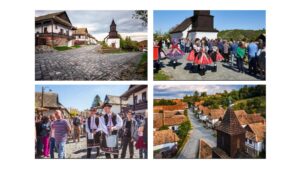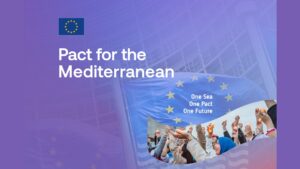Miyazaki’s woman who runs with the wolves
This is the continuation of the appraisal of Hayao Miyazaki’s oeuvre which, even if the creator himself does not like to be labelled as such, has a considerable and admitted environmental content – “we mustn’t tell the story without presenting its ecological issues” as he affirms. As in the previous post, we concentrate on one film at a time – now on the 1997 release Princess Mononoke which came to be not only a blockbuster in Japan but is noted as the cornerstone in Miyazaki’s career that brought about his international fame and recognition. The aim of this writing is to broaden the perspective on how many forms environmental education may take.
The animation movie most of us know as Princess Mononoke (a Vadon hercegnője in Hungarian) bears several titles and underwent many versions during the two decades its creator has been working on it. Although critically unanimously acclaimed, Miyazaki reported to have repeatedly woken up even many years after its completion in cold sweats from nightmares, feeling that it could have been done differently. The moving pictures guide us back to an archaic sphere of existence, the medieval period in Japanese history with its peoples of ironworkers, when human activity started to overstretch the environment’s regenerating capacity. While Miyazaki carried out thorough research on both the life of society and the state of the environment of that epoch, Princess Mononoke was not intended to be a typical period drama, especially not the samurai-kind we expect from a Japanese filmmaker.
On a more universal level, when accompanying one of the characters, Prince Ashitaka, who seeks the antidote of a curse imposed on him that is about to turn him into a demon and ultimately would cause his death, the journey we make is into a realm that lies dormant in our civilized souls. The movie itself is structured according to the ancient way of drama-making, which starts with catapulting the participant out of her ordinary mindset – Miyazaki’s version is a masterful combination of mind-blowing visuals enhanced with correspondingly bone-shaking sound. Thus engaged, we soon receive the highest of the teachings right up front, from the wise old woman of Prince Ashitaka’s tribe: “you cannot alter your fate however you can rise to meet it if you choose”.
What follows during the next 2 hours is the elaboration of this statement – a very common way of imparting wisdom in times and places where oral tradition prevails. With our mind wired by reading books and passing exams that test our capacities of analysis and data-memorization, it is hard to perceive lived experience as a way of churning knowledge – knowledge that results in behavioural change, right the kind environmental education is after. We rank cultures according to their levels of literacy – even target 4.6 of the 4th Sustainable Development Goal ‘Quality education’ aims at achieving universal literacy and numeracy by 2030 – and tend to look down at communities who do not record their wisdom.
One of the few researchers who challenged the supremacy of literacy over other forms of transmitting knowledge was MIT professor Girogio Diaz de Santillana (1902–1974) who suggested that the cultures that archive their experience in writing are in a state of decline, when none of the members of the society has the capacity anymore to record cultural wisdom in her own neuropathways and valued knowledge is exclusively intellectual. Historical facts, such as the Carolingian renaissance seem to underpin this view, where Charlemagne (†814), witnessing the rapid loss of knowledge throughout his Empire, gathered the few capable monk-scholars and ordered them to classify and record the knowledge of his age. The text you are reading right now is set into minuscules (only dotted by some majuscules at the beginning of each sentence), a simplified version of the roman alphabet that was invented during this 8th–9th century cultural revolution to speed up the pace of writing, to ease reading and to reduce the space a text is using up to save on precious parchment – none of these can be called elevating motives.
In the movie, although both the scenery and the characters are spectacular, the main role is played by the invisible but omnipresent: the emotion of hatred which arises in all of us (including gods, as the story goes) if things do not go our way. Prince Ashitaka is cursed through a wound caused by a fallen Boar-God whose spirit was digested up by his hatred towards men who logged the forests. Running from excruciating pain and for his life, seeking the Great Forest Spirit for mercy, Ashitaka, the last prince of the Emishi people is the only one in the story who is clearcut about the way out of the calamities creatures of all sorts cause themselves by sticking to their own idea of right and wrong: “to see with eyes unclouded by hate” is his answer when asked about his purpose.
When it comes to our environmental concerns, not only the trends of radicalization, but our more subtle ways of condemning others for consuming meat or for flying around by private jets, our dogged pursuit to convert the whole world into our standards of well-being so that we can be the nice version of ourselves – it all comes from our willingness to force things to go our way. Miyazaki presents us a world where even the Gods fall victim of their own likes and dislikes and thus become demons. He does not intend to picture a virgin forest as the primordial form of nature; instead, he gives us his interpretation on the Hindu concept of karma:
“The relationship between nature and human beings has a more fearsome part that could be termed karma. It is absurd to argue the merits of being gentle to the few surviving parts of nature after we have tormented it so thoroughly… human beings have attacked and modified nature to make it convenient for us. This certainly turns nature into something pleasant and beautiful for us, but the real character of nature is more cruel and brutal. If we discuss environmental issues or issues of nature without mentioning the irrationality, cruelty, and brutality of life itself, it becomes a shallow and insipid exercise.”
Present author did not come across any reference on how exactly the title-giving character was developed, but San or Princess Mononoke bears resemblances to Clarissa Pinkola Estés’s acclaimed book’s concept, the Women Who Run with the Wolves (1992). Although the Jungian psychologist has a more sentimental image on the lost wilderness, her message is very similar to that of Miyazaki, that it is the acceptance and not our attempts to tame our wild nature that will bring us the desired balance with the environment: “It’s not by accident that the pristine wilderness of our planet disappears as the understanding of our own inner wild nature fades. It is not so difficult to comprehend why old forests and old women are viewed as not very important resources. It is not so coincidental that wolves and coyotes, bears and wildish women have similar reputations. They all share related instinctual archetypes, and as such, both are erroneously reputed to be ingracious, wholly and innately dangerous, and ravenous.”
Photo: Fierce Princess Mononoke riding wolf-goddess Moro who raised her as her own daughter and who can see through scheming and cunning, unique qualities of the human race. Credit: wallpapers.com






